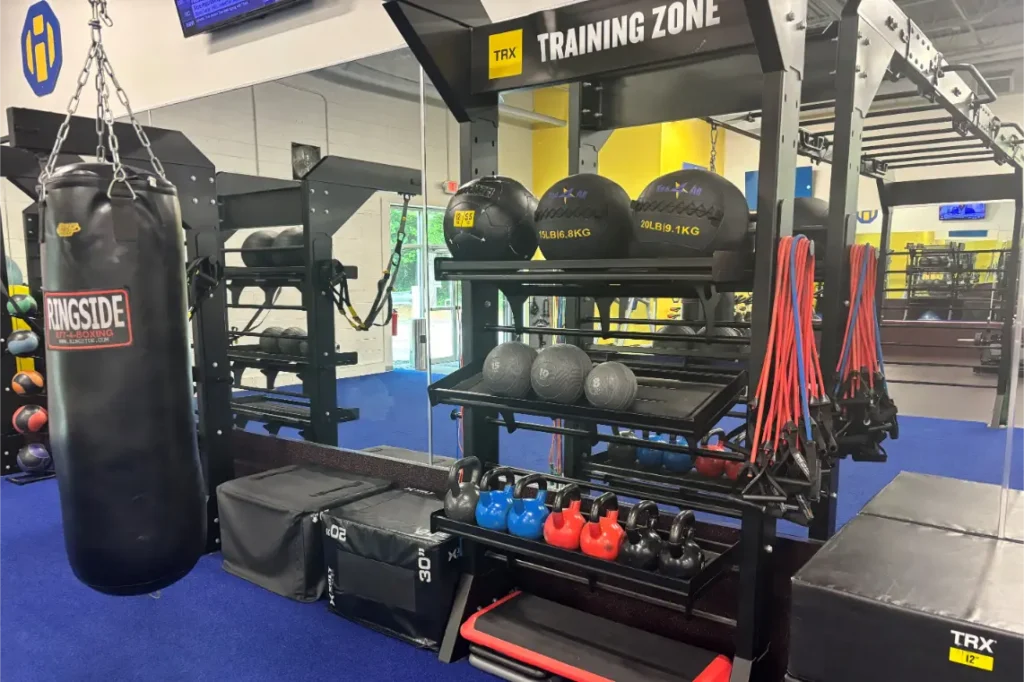Lower back pain is a common issue that can significantly impact your daily activities, including your workout routine. It’s crucial to understand which weight-lifting exercises to avoid to prevent aggravating the condition. This article will guide you through the exercises that are best left out of your routine if you’re experiencing lower back pain, along with safer alternatives to help you maintain your strength and fitness goals.
A better understanding of lower back pain
Lower back pain is a common complaint among many individuals, particularly those who lead sedentary lifestyles or have jobs that require long hours of sitting or heavy lifting. The lower back, also known as the lumbar region, is a complex structure of bones, muscles, ligaments, and nerves that work together to support the upper body and enable movement. When any of these components are strained or injured, it can lead to discomfort or pain in the lower back.
Causes of lower back pain
- Poor posture: Sitting or standing in incorrect positions for prolonged periods can lead to muscle imbalances and strain on the lower back.
- Muscle strain: Overexertion or lifting heavy objects improperly can cause the muscles and ligaments in the lower back to stretch or tear, resulting in pain.
- Herniated discs: The discs between the vertebrae can become compressed and bulge outward, pressing on nearby nerves and causing pain.
- Degenerative disc disease: As we age, the discs in the spine can wear down, leading to reduced flexibility and increased risk of injury.
- Sciatica: Irritation of the sciatic nerve, which runs from the lower back down the legs, can cause sharp pain that radiates from the lower back to the buttocks and legs.
- Arthritis: Inflammation of the joints in the spine can lead to stiffness and pain in the lower back.
- Spinal stenosis: Narrowing of the spinal canal can put pressure on the spinal cord and nerves, leading to pain and discomfort.
Exercises to avoid if you are dealing with lower back pain
- Traditional deadlifts: This exercise places significant stress on the lower back, especially if performed with improper form.
- Bent-over rows: The forward bending position can strain the lower back muscles, leading to discomfort and pain.
- Leg press: The fixed position of the leg press machine can put undue pressure on the lower back, especially with heavy weights.
- Full-range sit-ups: These can put excessive strain on the lower back, potentially worsening pain.
- Heavy squats: Deep squats with heavy weights can compress the spine and exacerbate lower back issues.
Safe alternatives for strength training
- Modified deadlifts: Try using a hex bar or performing Romanian deadlifts to reduce the strain on your lower back.
- Seated rows: Opt for seated rows instead of bent-over rows to maintain a neutral spine position.
- Leg extensions and curls: These isolation exercises can strengthen your legs without placing stress on your lower back.
- Partial crunches: Engage your core with partial crunches that lift your shoulders slightly off the ground.
- Goblet squats: Hold a kettlebell or dumbbell close to your chest while squatting to maintain a more upright posture.
Core strengthening exercises
Strengthening your core can provide better support for your lower back, reducing the risk of pain and injury.
- Planks: A great exercise to engage your entire core without straining your lower back.
- Bird dogs: This exercise helps improve balance and stability while gently strengthening the lower back and core.
- Pelvic tilts: A simple yet effective movement to engage and strengthen the lower back and abdominal muscles.
- Bridges: Lift your hips while keeping your feet flat on the ground to strengthen the glutes and lower back.
Tips for safe weightlifting with lower back pain
- Proper form and technique: Always prioritize form over weight to prevent unnecessary strain on your lower back.
- Gradual progression: Increase weights gradually to avoid sudden stress on your lower back.
- Listening to your body: Pay attention to any discomfort or pain and adjust your routine accordingly.
- Seeking professional advice: Consult with a fitness professional or physical therapist to ensure your workout plan is suitable for your condition.
If you are looking for a personal trainer in Fayetteville who can create a workout plan to assist you with your back pain, you should consider HiTone Fitness. Our experienced trainers will analyze your current fitness level, previous injuries, and goals to create a custom-tailored plan for you.
Maybe you want to go super-gentle to your body. In that case, give these lower body resistance band exercises a go.
Final thoughts
Dealing with lower back pain doesn’t mean you have to give up weightlifting altogether. By avoiding certain exercises and incorporating safer alternatives, you can continue to strengthen your body without exacerbating your pain. Remember to listen to your body and consult with professionals to tailor a workout routine that’s right for you.







